Examining one of the WORLD’S DUMBEST problems and how we can solve it with the hope of ending WORLD HUNGER!
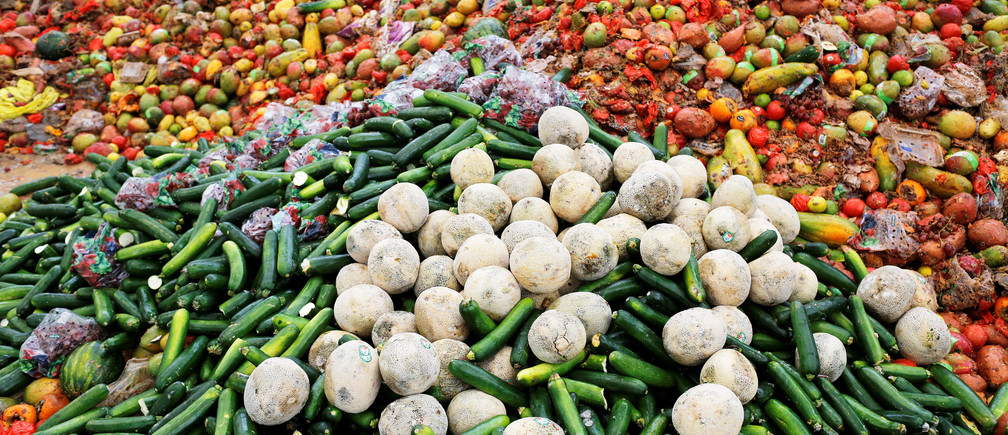
Reducing food loss and waste
World Hunger is on the rise; yet, an estimated 1/3 of all food produced globally is lost or goes to waste. We all have a part to play in reducing food loss and waste, not only for the sake of the food but for the resources that go into it.
Food and Agriculture Organization
of the United Nations (FAO)
Understanding the difference between Food Loss and Food Waste
Food loss and food waste over the past few years has indeed become a matter of great concern. Much so, that it has come to be highlighted in high stake meetings. The 2030 Agenda for Sustainable Development highlighted the problem as an issue that required our full attention. Not only because it has a massive effect on our current and future livelihoods, but also because it is one of humanities dumbest yet easy to fix problems.
The Target 12.3 of the Sustainable Development Goals calls for halving per capita global food waste at retail and consumer levels by 2030, as well as reducing food losses along the production and supply chains.
What is Food Loss and how does it differ from Food Waste?
Well according to FAO:
Food loss is the decrease in the quantity or quality of food resulting from decisions and actions by food suppliers in the chain, excluding retailers, food service providers and consumers.
Empirically, it refers to any food that is discarded, incinerated or otherwise disposed of along the food supply chain from harvest/slaughter/catch up to, but excluding, the retail level, and does not re-enter in any other productive utilization, such as feed or seed.
Food loss, as reported by FAO in the : the Food Loss Index (FLI) and the Food Waste Index (FWI) FLI, occurs from post-harvest up to, but not including, the retail level.
Food waste refers to the decrease in the quantity or quality of food resulting from decisions and actions by retailers, food service providers and consumers.
Food and Agriculture Organization of the United Nations (FAO)
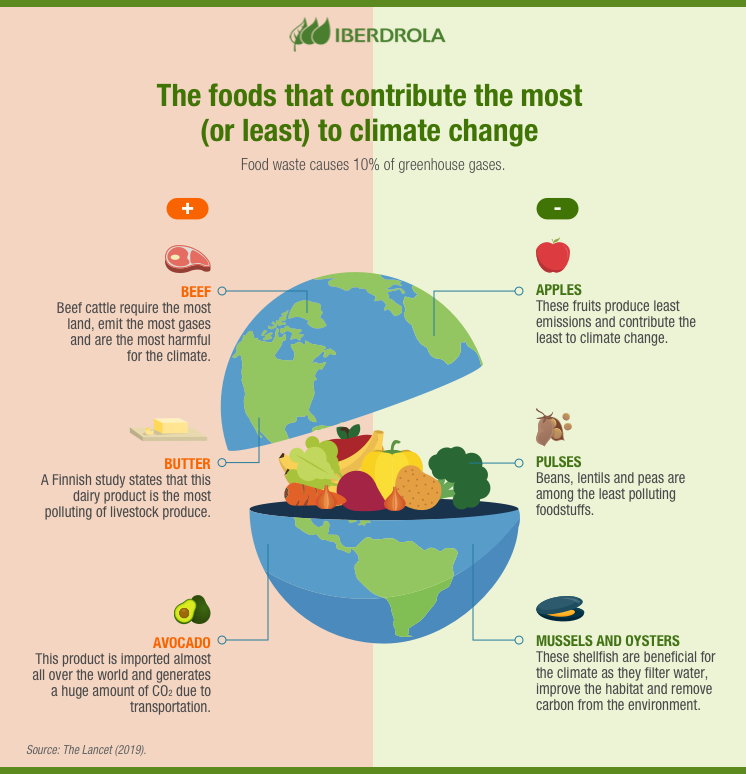
What about the climate?
Glad you asked!
When we think about climate change, many at times we think, about large industries and their effluents, vehicles, construction and their overwhelming carbon footprint. We seldom look at the Agriculture and Food industry, in particular all the food that gets wasted and its implications on the environment.
In the US alone, roughly 40% of all food produced, never gets eaten, that’s about 365 million pounds of food a day, and on an even larger scale, globally 1/3 of all food produced goes to waste.
Now think about all the land use, chemicals, pesticides, water and processing that goes into growing and producing food.
See, it’s tragic!
We are trashing our planet to grow food that no one will even eat.
Emmy-nominated conservation scientist Dr. M. Sanjayan
That’s not food that someone munches and throws away, but food that is produced and is never ever touched and just goes to waste.
While that’s happening, let us remember that there are millions of people worldwide that hardly ever see a plate of food or easily put, go hungry every single day, yet there’s more than enough food to feed them.
The science behind the climate impact:
Well it’s pretty simple, when this food we never consume goes into large dumpsters, it begins to decay and produce Methane, CH4. One of the world’s most deadly polluters and contributors to green house warming.
Of all the greenhouse gases, methane is one of the most potent because of its ability to efficiently absorb heat in Earth’s atmosphere. Studies have shown that, over a 20-year period, a kilogram of methane warms the planet as much as 80 times more than a kilogram of carbon dioxide.
Popular mechanics.com
This especially worrying scientifically, knowing that methane lasts for about a decade in the atmosphere, which upon combing with a free Hydroxyl radical turns into Carbon Dioxide, which can last in the atmosphere for centuries!
If global food waste was a country it would be the third largest emitter of greenhouse gases, right behind the US and China.
What’s the price?
In an interesting article by Forbes that I read in reference to FAO’s video on food waste(find it in the resource library) 📚 I discovered some nice facts and figures for all of you economic enthusiasts!
If you consider the global impact of food waste:
30 percent of the global food supply is wasted – the retail equivalent of $1 trillion of food each year, says the Food and Agriculture Organization (FAO) of the UN.
The FAO’s second video of their Food Wastage Footprint project explains that, in addition to the retail cost of food lost, another $700 billion is also thrown out in natural resources, including $172 billion in wasted water, $42 billion in cleared forest and $429 billion in related greenhouse gas costs.
But what is most shocking to me are the social costs the FAO determined are also linked to rotten food.
Wasted food results in $150 billion in human health costs related to the use of pesticides (which also implies that the health costs of using chemicals on the 70% of food we actually eat totals at least an additional $350 billion a year). $280 billion in loss of livelihoods (as natural resources become more scarce) is also tossed out the window when we throw away food.
This article was written by Beth Hoffman a writer at Forbes who focus on changing the food system, and the economic findings alone are definitely alarming.
That is definitely a hefty price to pay.
Dumpster Diving!
Dumpster diving is salvaging from large commercial, residential, industrial and construction containers for unused items discarded by their owners, but deemed useful to the picker.
Acccording to Wikipedia (I know, never trust Wiki alone, but its just a definition, read on :))
To prove that all the food that gets wasted is untouched and can be consumed, here are a few pictures I found:)
Most of which are from the RobGreenfield foundation. He founded this organization after cycling through the entire of the United States, and has lived off the grid for several years. He is an environmental enthusiast, who has taken more baths under waterfalls than in a house with piped water. More importantly, he has lived almost entirely off food that has been trashed in the dumpster.
I have linked his TED talk at the end of this article!
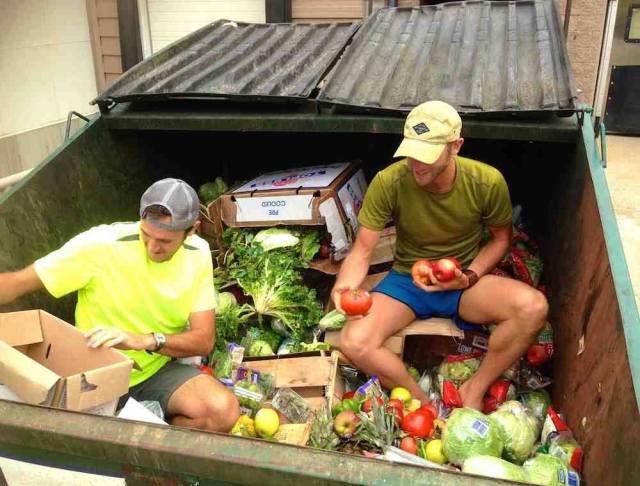
Photos courtesy: RobGreenfield.org 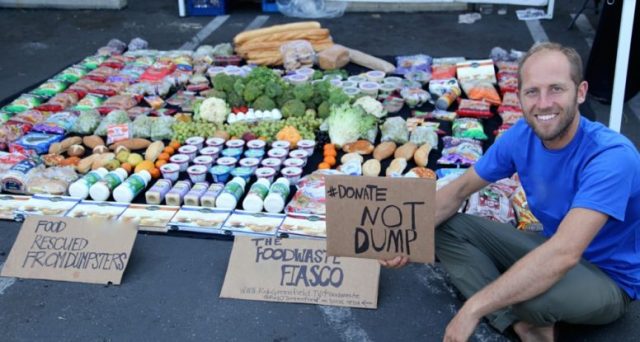
Photos courtesy: RobGreenfield.org 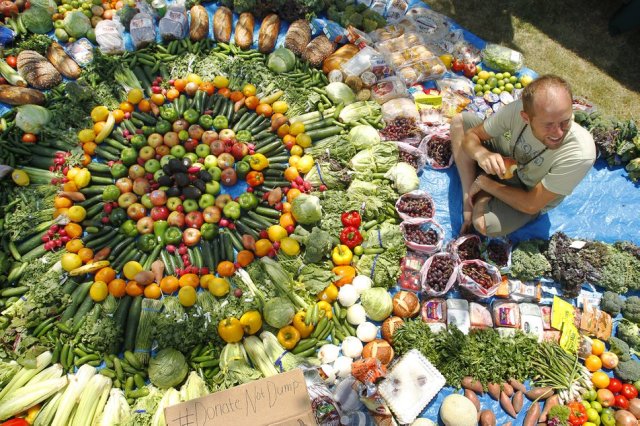
Photos courtesy: RobGreenfield.org 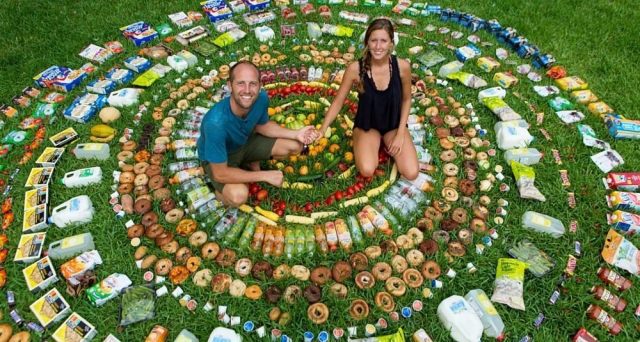
Photos courtesy: RobGreenfield.org 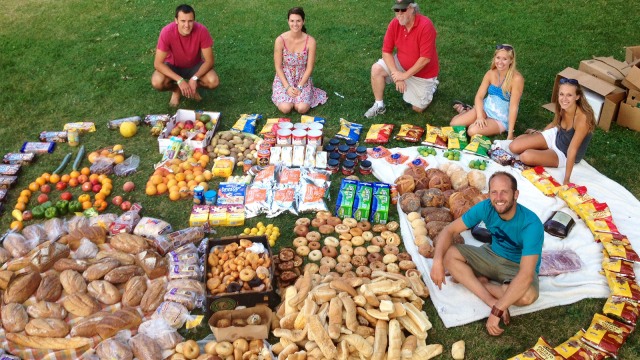
Photos courtesy: RobGreenfield.org
If you look keenly, this is high quality food that is completely untouched, that can feed hundreds yet it all finds its way in the bins.
Well how can we fix it? What can we do?
The Solutions and Ideas 💡
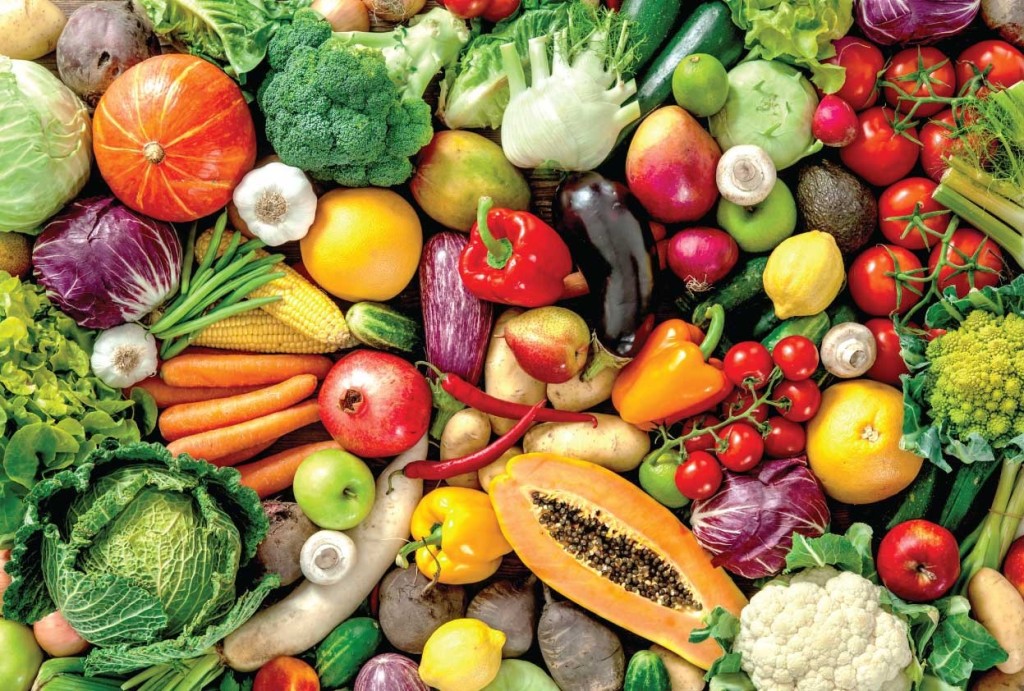
First of all, we must come together and recognize that this is a grave issue in our homes and in our communities as majority of the food waste, is contributed by consumers. The average household in the US spends about $1500 per year on food that is wasted. This is food that comes into our homes, that we probably munch on or dump in the fridge and ends up going bad and soon enough we toss it out.
This is both our fault and the fault of the industries that manufacture refrigerators. Over the last few years, refrigerators have increased in size and volume, enticing us to buy more and store more. Most of the food, we buy we really do not need at the time. A study was done that proves that we are more enticed to buy foods while we are at the grocery store and we feel like we really need it, but once we have the food and get home we realize we didn’t really need all that much as such. It’s also been studied that once the food goes in the refrigerator, it loses its value and we end up not consuming as much as, we constantly stock up and fill up the space in the refrigerator.
We just do not want to see empty space in our refrigerators, and once food is in there, we stock up more and more while some of the food earlier placed begins to go bad.
I mean some of us are even shocked when we find a particular food or drink in the refrigerator, that we did not even know existed until that day.
This is just one thing we need to fix.
We could also reduce the size of plates and completely eliminate trays in institutions such as schools and places of works. The average size of the plate has tremendously grown in the last few years and has encouraged us to put more food on our plates, thinking that we need that much while in reality some of us struggle to finish an entire plate of food that we earlier put heaps of food on.
A study was conducted at the University of California Santa Cruz, where Jill Horst, the Director of residential dining services at the institution got rid of trays in 2009 and started serving in portions. They allowed the students to serve as much as they wanted but only as much as their plates could carry. The result is, the food waste per person reduced by almost half. If you think in large scale terms, where the university serves 13,000 people. It’s a remarkable 5000 pounds of food, saved per day that would otherwise have been wasted. (More in the Video Resources tab courtesy: Vox)
However, in the near future the best plan and alternative would be to take the food that is wasted and build up streams and channels that could get this food to where it’s needed.
This is something that each and everyone of us needs to think through and work together to achieve!
I invite you to share your amazing ideas in the comment section and we can think through and discuss them together!
Below are two ways we can think through it one is local and the other is soon to be global.
Partnering to Reduce Food Waste in Kenya by TechnoServe
Waste Less. Feed More. by Copia (More on this in the Vox video)
In conclusion, this is a problem that is really easy to fix and that can better our planet and feed everyone in our communities.
Resources
MIT’s Foodcam automatically alerts people when food is up for grabs – Business Insider
Food Loss and Food Waste – FAO
Sustainable Development Goals -FAO
A new diet to combat the climate crisis -Iberdrola
Climate Lab -University of California
Video Resources
Just Eat It! A food waste story.
Food waste is the world’s dumbest problem – Vox
Rob Greenfield’s Ted Talk
FAO video on Food Waste and its footprint

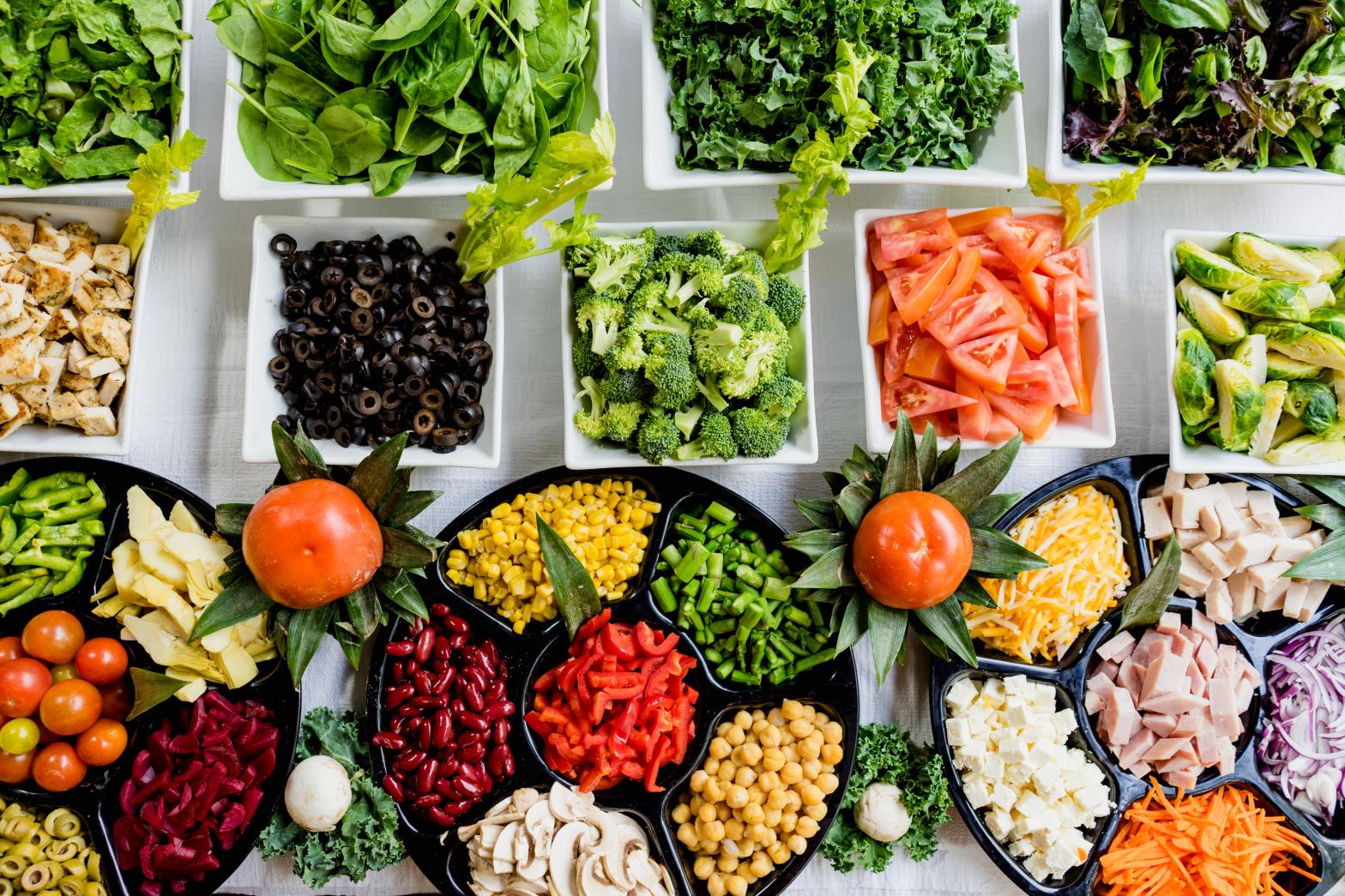
wOOOOOOW this is so educative. The whole world needs to see this . Good job Ryan
LikeLiked by 1 person
Thank youuuuuu ❤️✌🏽
LikeLike
This ish be eye opening bro, but it’s not an easy journey due to capitalism perspectives…
LikeLiked by 1 person
Trueee especially if you think about food along political lines too, it’s gonna be a mighty challenge but we have to try
LikeLike
I have always known about food waste but didn’t think it’s this big. Thank you for bringing out this challenge, I hope the conversation won’t stop here, and the message will keep spreading
LikeLiked by 1 person
Yes Yes! Its more massive than I thought too and I think it is something we can manage and help reduce. For the sake of our planet and for the sake of others who don’t have all these privileges.
LikeLike
I never actively thought about this. This is really enligtening!
LikeLiked by 1 person
Glad it helped Spark a thought train!
LikeLike